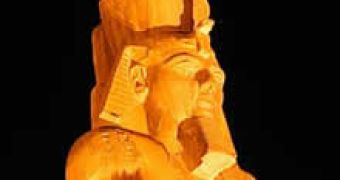Ramses II (or the Great) was one of the most important pharaohs. He was part of the 19th dynasty and reigned for 66 years from 1279 to 1213 B.C. He died at around 90 years old. There are probably more statues of him in existence than of any other Egyptian pharaoh. He built a large amount of monuments up and down the Nile recording his achievements, as well as plenty of temples, the most famous of which is the Abu Simbel complex - a monument to himself and his queen Nefertari, that commemorates his alleged victory at the Battle of Kadesh.
The temples were meant to impress Egypt's southern neighbors, and to reinforce the status of Egyptian religion in the region. Unfortunately, although Ramses II had built a large number of temples for worshiping the Sun gods, the main one being Ra, only small portions had remained as they were plundered. People used the stone from the temples to build other constructions.
What has once been one of the holiest Egyptian cities, Heliopolis, is now covered with residential neighborhoods. In Cairo there is a modern district called Heliopolis. Thus it is no wonder that archeologists found the temple under an outdoor market.
The site is still only partially uncovered, but they already found a pink granite statue weighing 4 to 5 tons which is believed to represent Ramses II and a 3-ton head from a royal statue. Another statue, measuring around 1.5 meters has hieroglyphics that include three tablets with the name of Ramses II. This temple seems to be one of the largest ever found in this region and it probably was one of the most important temples in ancient Heliopolis, according to Zahi Hawass, the head of the Egyptian Supreme Council of Antiquities.

 14 DAY TRIAL //
14 DAY TRIAL //